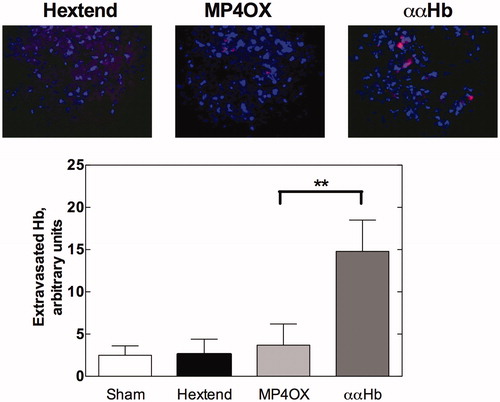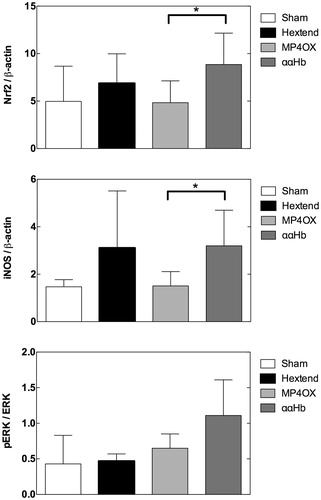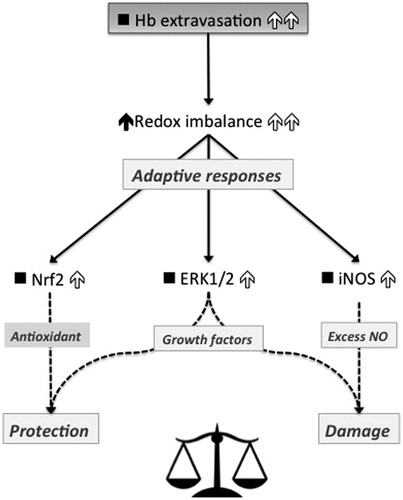Figures & data
Figure 1. Hb extravasation. The top panel reports representative images from Hextend, MP4OX, ααHb-treated rats sacrificed at 2 h after exchange transfusion. Extravasated Hb was reacted with anti-Hb α chain and counterstained with rhodamine-labeled antibody (red). Neurons were stained with the anti-NeuN antibody and counterstained with fluorescein-labeled antibody, which was converted into blue to favor visibility. Lack of overlapping between the blue and red signals indicates that virtually all Hb α chains were outside the neurons. The bottom panel reports the red pixel intensity count obtained in five images/slide, two slides/sample, and 4–6 samples/group (n = 40–60/samples/group). The bars represent mean ± SD, ** P = 0.01 unpaired two-tailed Student t-test.

Figure 2. Expression of Nrf2, iNOS, and the phosphorylated ERK/total ERK ratio (from top to bottom). Nrf2 and iNOS are expressed in relation to β-actin as load control. The bars represent the average density (mean ± SD) of Western blots obtained using the primary antibody against the indicated proteins, and a secondary labeled antibody. *P = 0.05, unpaired two-tailed Student t-test.

Figure 3. Scheme depicting the downstream effects observed in rats exchange-transfused with either MP4OX (low-Hb extravasation) or ααHb (high-Hb extravasation). Filled upwards arrows on the left and empty upwards arrows on the right indicate the effects driven by low and high Hb extravasation, respectively. ▪ indicates no response. Hb extravasation imbalances the redox status to a larger extent upon exchange-transfusion with ααHb than MP4OX, likely due to the Fenton reaction. The examined adaptive responses follow three arms. Antioxidant Nrf2, finally leading to protection, responds to a larger extent to ααHb than MP4OX. Pro-oxidant iNOS, main producer of NO, and major contributor to damaging oxidative stress, is also higher in ααHb than MP4OX. Likewise ERK1/2 is higher in ααHb than MP4OX, but the effects driven by this protein are controversial. As a final outcome, the redox imbalance appears shifted toward protection in MP4OX, and toward damage in ααHb as a direct consequence of Hb extravasation.

